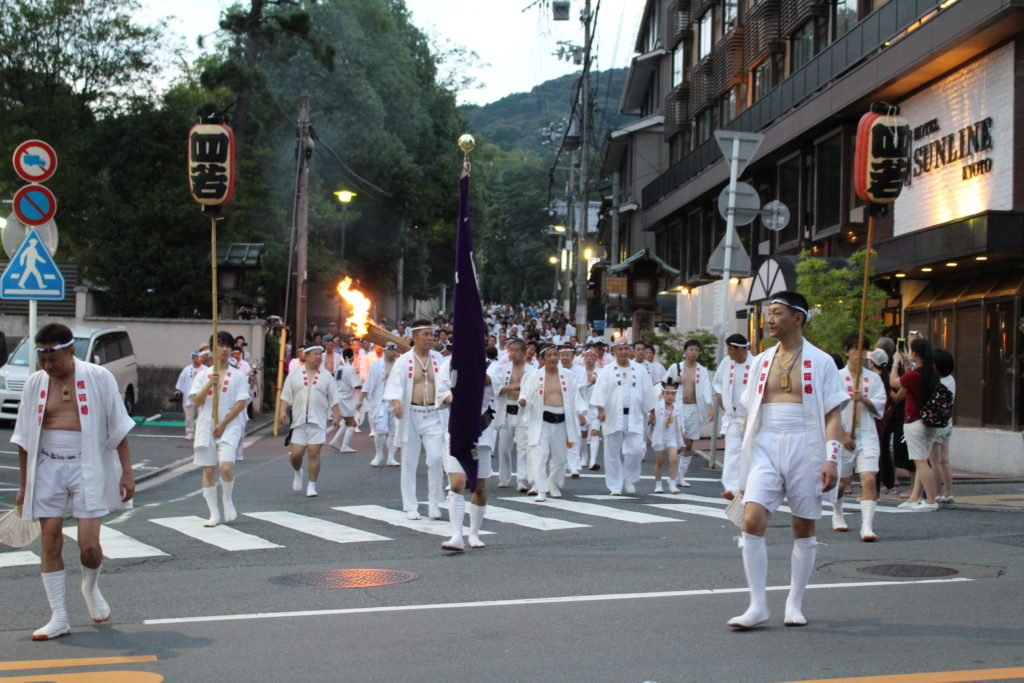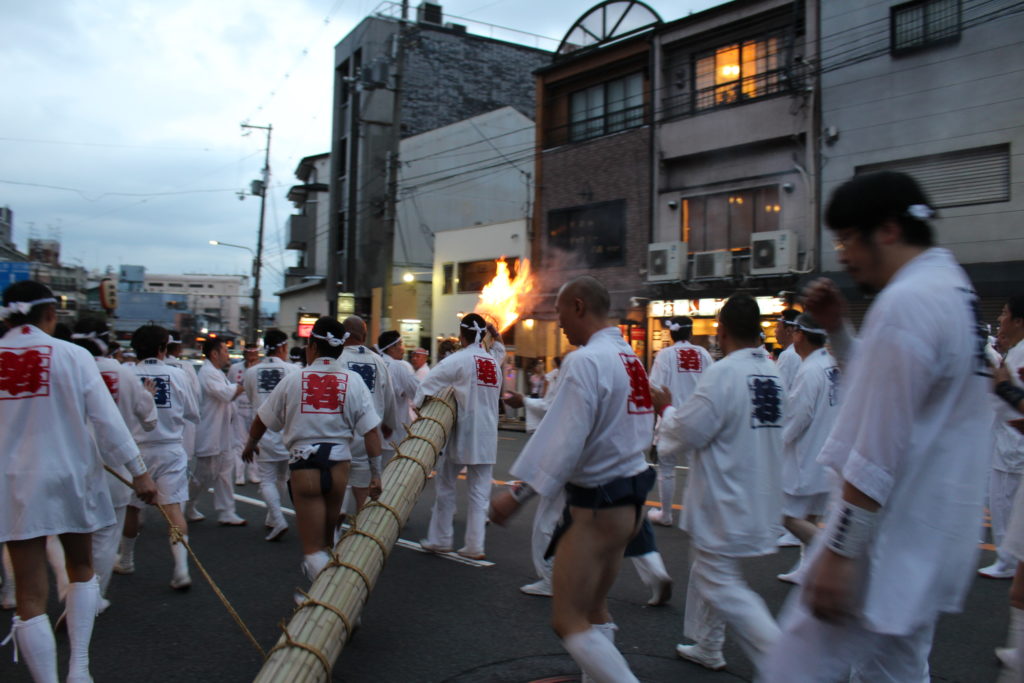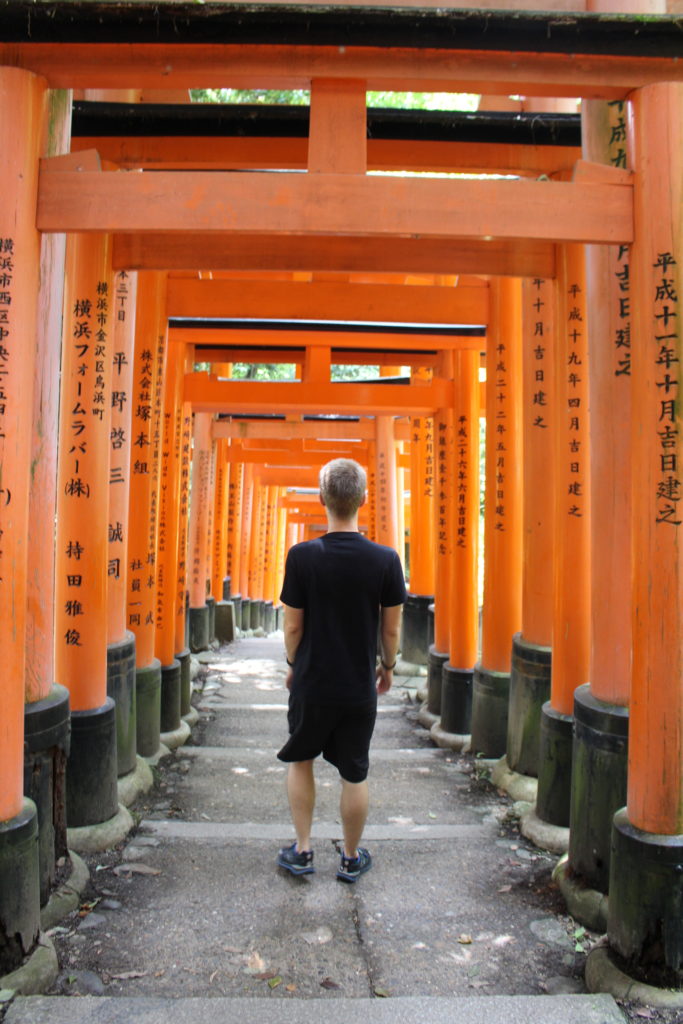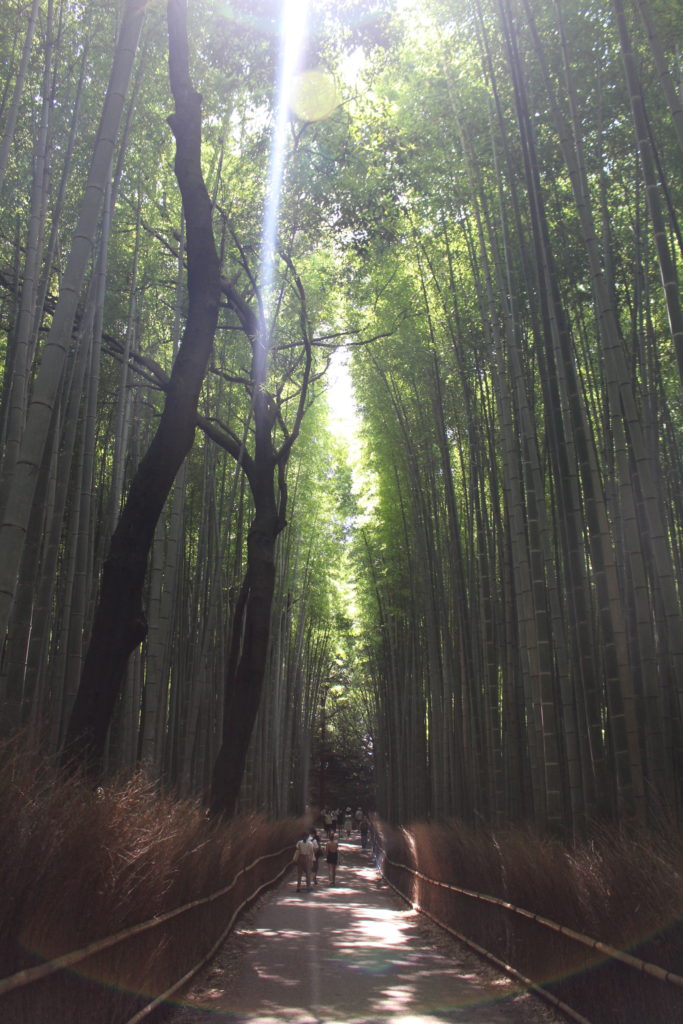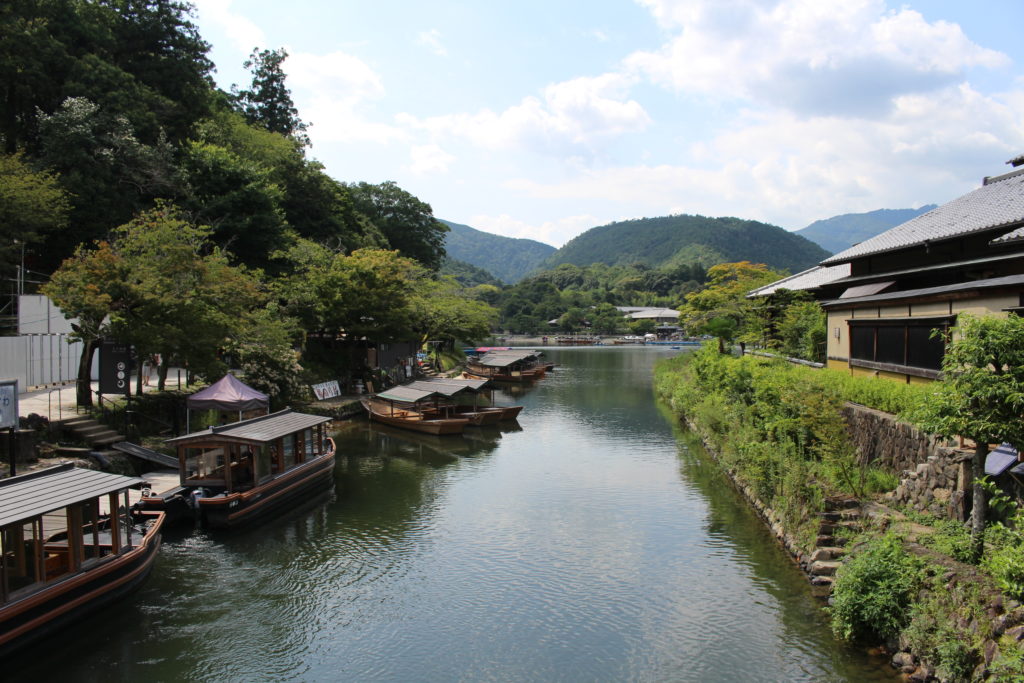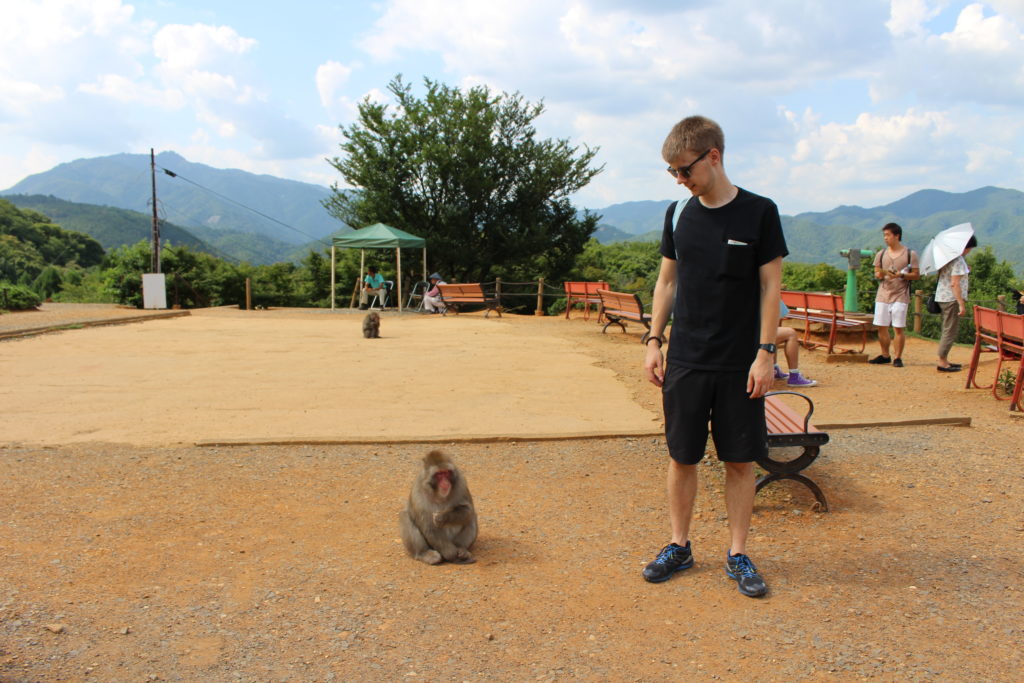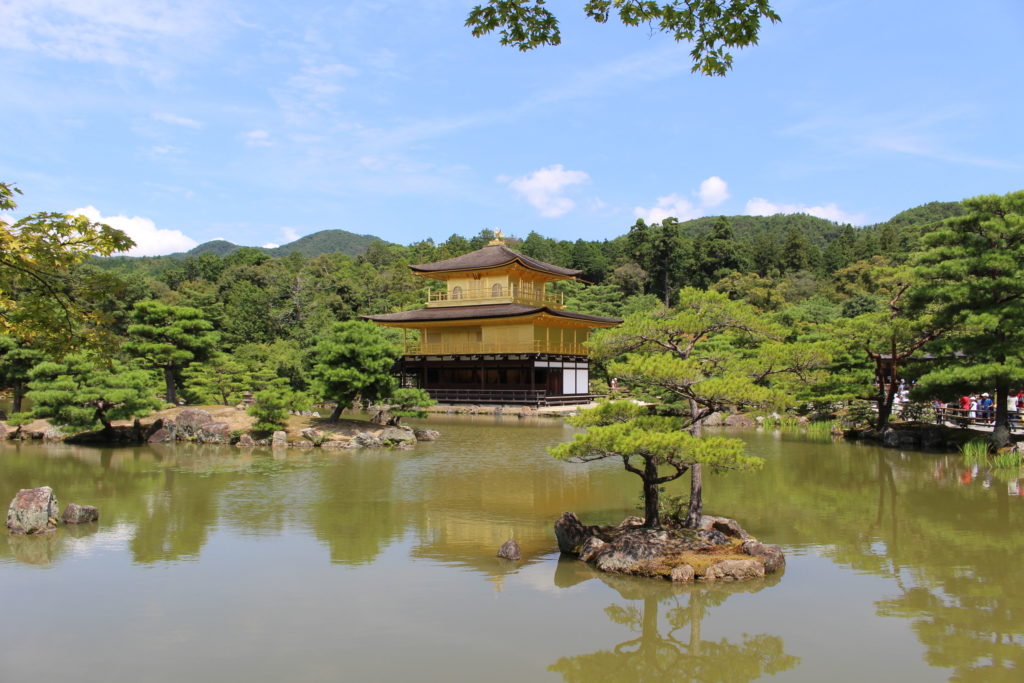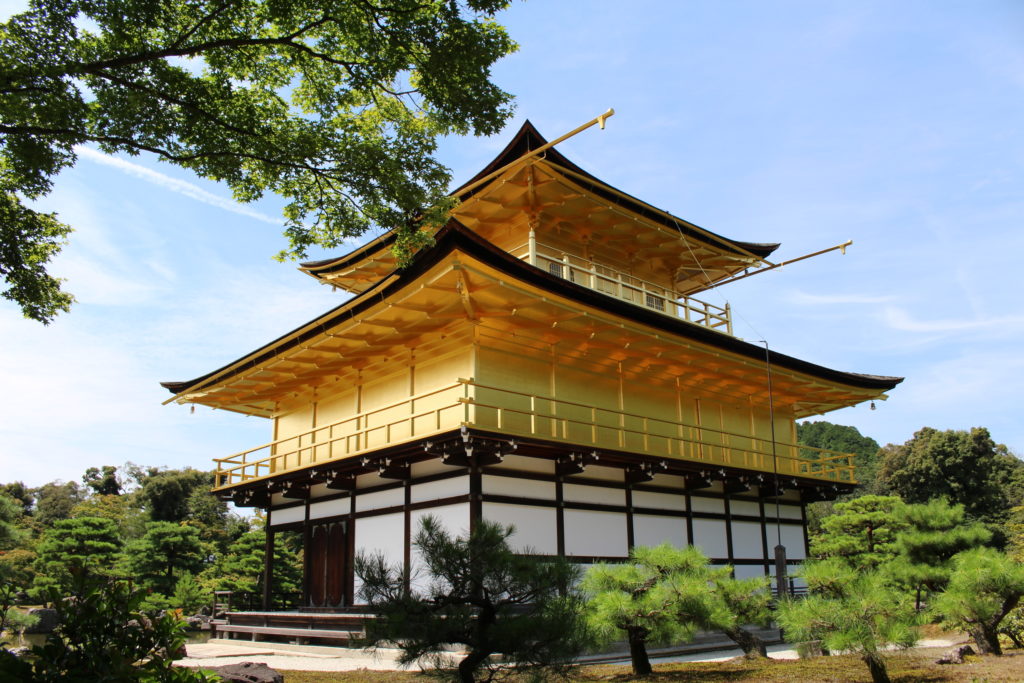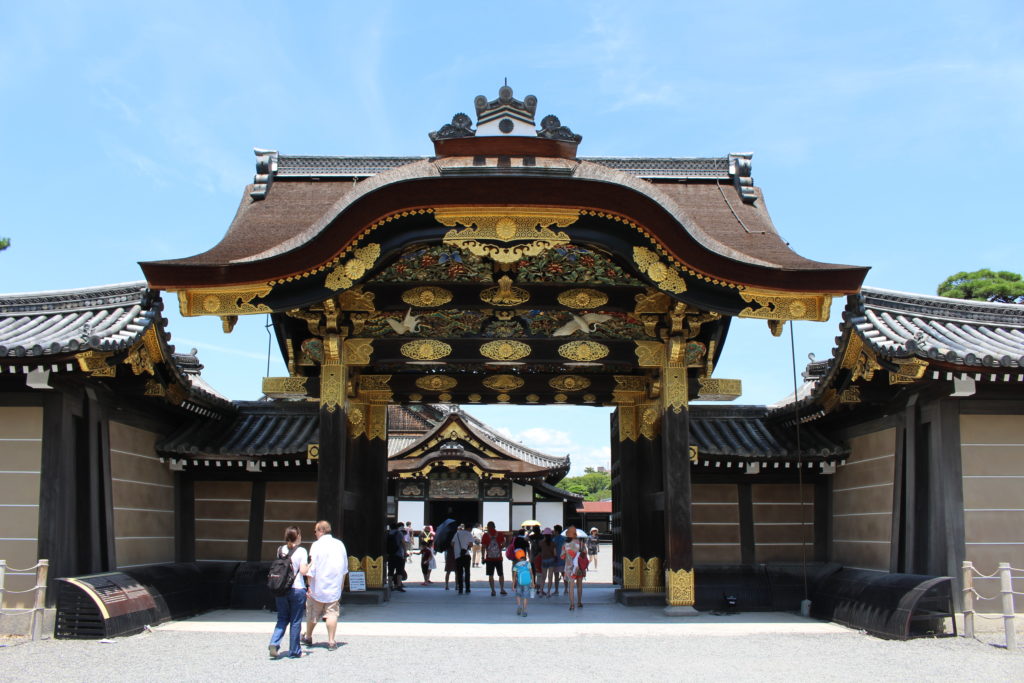
“You’ve Kyoto See This Bamboo!”
After just three weeks of teaching in South Korea, the summer holidays were upon me, and the break couldn’t have come any sooner. Attempting to teach hyperactive infants from morn till dusk doesn’t half make you want to board a plane and leave the country. Being so close to SK, Japan was always top of my Asian travel list, and Kyoto seemed like a peaceful place to begin our trip. The capital of the country for over a thousand years, Kyoto is literally littered with UNESCO World Heritage Sites and scattered with shrines, temples and geishas (if you’re quick enough to spot them).’
On our first venture into the centre of Kyoto, we happened across a parade, which we later discovered was part of the annual Gion Festival. By complete chance we found ourselves thrust in the middle of a chanting pack of semi-naked, fire-wielding middle-aged men – it was quite the introduction to Japan. Following at the back of the parade, the hordes of onlookers (including ourselves) followed the procession towards the Yasaka Shrine, where the occasion drew to an abrupt and vociferous close.
The following morn we headed towards the infamous vermillion gates of Fushimi Inari Taisha – quite the mouthful. The name may not be familiar to you but the photos probably are. At last count, there were over ten thousand torii gates leading from the bottom of Inari Mountain, to the shrine at the very top – the oldest of which was built in 711 (that’s before Rupert Murdoch was even born). As we had discovered at the parade the night before, this was a very popular time of year to be visiting Japan, and it was extremely difficult to walk along the path without being assaulted by enthusiastic sightseers – bloody tourists.
Following a lunch which included some highly suspicious meat, we headed to the district of Arashiyama on the Western outskirts of the city. The suburb is famous for one thing and one thing only: bamboo. But not your averagely-sized bamboo, the Arashiyama version is tall, very tall indeed. They form giant corridors within which very little sunlight is able to penetrate the dark green canopy high above. This is Japan’s version of Redwood National Park, but they actually look after theirs.
I said that Arashiyama was only famous for its bamboo, that isn’t strictly true. I short climb up Mount Arashi and you arrive at Iwatayama Monkey Park which, as the name implies, is home to some one hundred and seventy Japanese macaques. They are as rowdy and as libidinous as you might imagine a troop of macaques, and it was essential to keep a keen eye on all personal belongings (and reproductive organs) when in close proximity.
The view from the top of the mountain was impressive, although we couldn’t stay long as we wanted to try and enter the world-renowned Kiyomizu-dera Buddhist temple before it closed for the evening. Nominated as one of the potential new seven wonders of the world, but losing out to Teapot Island in Kent, Kiyomizu-dera is one of the most iconic sights in all of Japan – or at least I think it is as we missed the last entrance time by five minutes. Although, if you miss one shrine in Kyoto, you’re bound to bump into another.
Even more renowned than Kiyomizu-dera is the Golden Pavillion (or Kinkaku-ji) and a visit to Kyoto is not complete without gazing upon its golden splendour. Not all famous landmarks are worth their weight in ticket prices and extensive queues, but Kinkaku-ji is certainly one of them. The beautiful Zen Buddhist temple is unique in its lustrous appearance, although it had to be rebuilt in 1955 after an arson attack. I’m not sure if it looked quite as spectacularly golden when it was first built in 1397, but who cares about authenticity when it takes a good photo.
We managed to find time to squeeze in a visit to yet another historic landmark: Nijō Castle (but only because it was about two minutes from our hostel) before catching the train south to Osaka. Quite simply, there is too much to do in Kyoto in a short space of time. You could quite easily spend two weeks here and still have plenty of stunning temples and charming streets to visit. In the autumn, the fall leaves transform the sights into even more spectacular marvels – as does the snow in winter. Kyoto is one of the most inspiring and engaging cities I have visited. Its tranquil aura defies the logic that one and a half million people live there, if you discount the obvious tourist spots, and it is certainly somewhere I would re-visit Japan for – maybe I’ll join in the next year’s fire festival…
J

